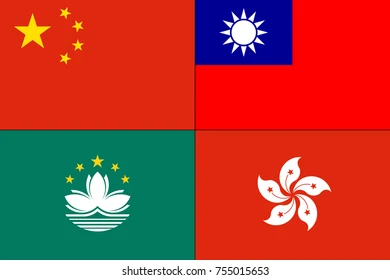The need for Chinese translations is no longer limited to international trade or diplomatic agreements. In an increasingly interconnected world, translating texts from Spanish to Chinese responds not only to economic or legal demands but also to cultural, educational, and technological ones. Today, talking about Chinese translations means addressing a phenomenon of language crossing, identity, and context that goes far beyond a simple change of language.
One language, many worlds
Chinese is not a homogeneous language. Although Standard Mandarin is the most widely spoken and officially recognized language in China, there are multiple linguistic varieties. Furthermore, in regions like Taiwan, Hong Kong, or Macau, tey use different writing systems. Mainland China uses simplified characters, while other regions continue to use traditional ones. Therefore, when we talk about Chinese translations, we are referring to a task that requires both technical and cultural decisions from the outset.
Translating into Chinese not only demands linguistic precision but also a deep understanding of the cultural context of the target audience. A text that works perfectly in Spanish (with local references, idioms, or wordplay) may lose its meaning entirely or become inappropriate if not properly adapted to the Chinese socio-cultural environment.

The complexity of translating from Spanish to Chinese
One of the main challenges of Chinese translations is the structural leap between two languages that share neither roots nor similar syntactic frameworks. Spanish has a rich and flexible verbal system. Chinese, on the other hand, lacks verb conjugations and uses grammatical particles to express tense or aspect. Translators must entirely reformulate certain ideas to preserve their meaning in the new language due to this difference.
Additionally, Chinese is a tonal language. While tone does not directly affect written translation, it does influence how proper names or brand names are phonetically adapted. Many translation errors arise precisely from neglecting these phonological and semantic subtleties.
Another critical aspect is that a word in Chinese can have multiple meanings depending on the context. That’s why automated tools often fall short when used for Chinese translations, especially in technical, symbolic, or specialized texts.
The role of Chinese translations in intercultural relations
Beyond grammar, Chinese translations play an essential role in building bridges between communities. Each well-executed translation is a way to connect different ways of thinking. Nowadays, where companies explore opportunities in Asian, the quality of the translation can determine the success of a project.
Furthermore, the rise of Chinese tourism in Spanish-speaking countries has created new translation needs in sectors such as hospitality, retail, and healthcare. It’s not just about translating menus or signs, but interpreting expectations, customs, and forms of social interaction.
Specialized Chinese translations and new challenges
Nowadays, professional translators carry out many Chinese translations in highly specific fields such as medicine, marketing, or international law. These texts require not only command of the language but also technical expertise in the relevant subject. A lack of precision in a medical translation or legal contract can lead to serious consequences. Highlighting the importance of relying on professionals trained not only in translation but also in the specialized field.
On the other hand, the rise of artificial intelligence and machine translation tools has sparked a new debate. While these technologies can assist with repetitive tasks or be helpful in preliminary stages, they are still far from replacing the cultural sensitivity and terminological accuracy that a human translator can offer, especially when it comes to Chinese.
Conclusion: Chinese translations go beyond word conversion
Talking about Chinese translations means addressing a process that far exceeds the literal transfer of a message. It involves interpreting, adapting, and reconstructing meanings between languages that reflect entirely different worldviews. In a global context where cultural distances seem to shrink but also become more apparent, the role of the translator remains fundamental, not as a mere linguistic intermediary but as a true cultural mediator.
Chinese translations, when carried out with both linguistic and cultural awareness, do more than convey information, they enable mutual understanding, promote international collaboration, and help build a more inclusive and diverse global society.
If you’re looking for accurate, professionally adapted Chinese translations, Max Translation offers customized linguistic solutions. Our native-speaking translators ensure not only terminological accuracy but also the cultural adaptation your project needs. Contact us and take your communication to the next level without borders.



